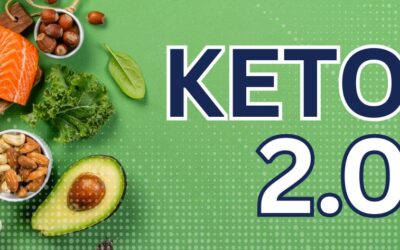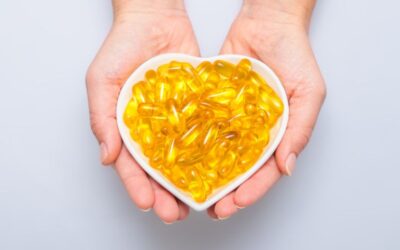What is Diabetes?
Diabetes is a chronic metabolic disorder characterized by high levels of glucose (sugar) in the blood.
High levels of glucose occur due to problems with insulin production, insulin action, or both.
What is Insulin?
Insulin is a hormone produced by the pancreas that helps regulate blood sugar levels by facilitating the uptake of glucose into cells for energy or storage.
Types of Diabetes
There are more than three types of diabetes that you can read about in my article How To Reverse Diabetes in 30 Days ; but in summary, there are three main types of diabetes:
1. Type 1 Diabetes. Type 1 Diabetes, often referred to as juvenile or insulin-dependent diabetes, is an autoimmune disease in which the body’s immune system mistakenly attacks and destroys the insulin-producing cells in the pancreas. As a result, the pancreas produces little to no insulin. People with Type 1 Diabetes require lifelong insulin therapy to control their blood sugar levels. This type of diabetes typically develops in childhood or adolescence, but it can occur at any age.
2. Type 2 Diabetes. Type 2 Diabetes is the most common form of diabetes, accounting for the majority of cases. It occurs when the body becomes resistant to the effects of insulin or fails to produce enough insulin to maintain normal blood sugar levels.
Type 2 Diabetes is often associated with factors such as obesity, sedentary lifestyle, poor diet, and genetic predisposition. Initially, lifestyle modifications, such as weight loss, regular exercise, and dietary changes may be sufficient to manage blood sugar levels. However, over time, many people succumb to oral medications or insulin therapy to control this disease.
3. Gestational Diabetes. Gestational diabetes occurs during pregnancy and affects some women who have never had diabetes before. It is caused by hormonal changes and insulin resistance during pregnancy. Gestational diabetes usually resolves after giving birth, but it increases the risk of developing type 2 diabetes later in life for both the mother and child. Controlling blood sugar levels during pregnancy is essential to ensure a healthy pregnancy and reduce the risk of complications.
Health Complications from Diabetes
Uncontrolled diabetes can lead to various complications over time, affecting different parts of the body, including the eyes, kidneys, nerves, heart, and blood vessels. These complications can include:
- Diabetic retinopathy (eye damage)
- Diabetic nephropathy (kidney disease)
- Neuropathy (nerve damage)
- Cardiovascular diseases
- Foot ulcers
Cause Of Diabetes
Insulin Resistance is known as the lead up to diabetes, but what is behind Insulin Resistance?
Increased Fructose in the Diet and Fatty Liver
Before 1980, Insulin Resistance, Type 2 Diabetes and Non-Alcoholic Fatty Liver didn’t exist in children, and now they do. What has changed?
The food supply. Processed food with high levels of Fructose and no fiber.
Fructose Versus Glucose Calories
Processed food usually is high in High Fructose Corn Syrup and stripped of fiber. Processed food has no fiber to slow down the rise in blood sugar and insulin; as a result, the severe spikes in blood sugar quickly lead to chronic disease like Leaky Gut, Type 2 Diabetes, and Fatty Liver disease. Because fructose is metabolized differently than glucose, the calories don’t impact the body equally. In other words, “a Calorie is not just a Calorie”.
Fructose turns into Liver Fat
Fructose and glucose are both simple sugars with 4 calories per gram; but that isn’t the whole story. Here are some key differences in how fructose is metabolized compared to glucose:
- Absorption: Glucose is readily absorbed by the body through the cells lining the small intestine with the help of specific glucose transporters. Fructose, on the other hand, is absorbed primarily in the liver, and easily converts into liver fat.
- Insulin Dependence: Glucose metabolism relies on insulin, a hormone produced by the pancreas. Insulin helps transport glucose into cells, where it can be used for energy or stored as glycogen. Fructose, however, does not require insulin for absorption or initial metabolism. This might seem like a good thing, but it isn’t.
- Liver Metabolism: Once fructose reaches the liver, it undergoes a different metabolic pathway compared to glucose. Fructose is rapidly phosphorylated by an enzyme called fructokinase, leading to the production of fructose-1-phosphate. This process does not regulate the metabolism of fructose, allowing for a more rapid conversion into other metabolic intermediates.
- Glycogen Storage: Unlike glucose, which can be readily converted to glycogen and stored in the liver and muscles for later energy use, fructose is not efficiently used for glycogen synthesis. Instead, excess fructose is more likely to be converted into fatty acids and stored as fat in the liver (a process called de novo lipogenesis). This is why high fructose intake, particularly from added sugars, has been associated with an increased risk of fatty liver and metabolic disorders.
- Hormonal Effects: Fructose does not elicit the same rapid and robust insulin response as glucose. Instead, it primarily affects the release of other hormones like insulin-like growth factor 1 (IGF-1) and leptin, which can influence hunger and satiety signals and potentially impact overall energy balance. In other words, eating fructose may make you more hungry, leading to a higher caloric intake.
- Mitochondrial Health: Fructose is believed to lower ATP, the cellular energy, and indirectly lower metabolism. Without increasing caloric intake calories from fructose increase incidence of Insulin Resistance and chronic disease versus calories from glucose.
It’s worth noting that while fructose and glucose are metabolized differently, they are often consumed together in the form of sucrose (table sugar) and high-fructose corn syrup. These sweeteners consist of roughly equal parts glucose and fructose. The overall impact on health depends on the total intake of added sugars and the context in which they are consumed, such as in whole fruits versus processed foods.
Fatty Liver Leads to Diabetes
Fatty liver, also known as non-alcoholic fatty liver disease (NAFLD), refers to the accumulation of excess fat in the liver cells. This condition is commonly associated with obesity, insulin resistance, and type 2 diabetes. While the exact mechanisms are not fully understood, there are several ways in which fatty liver can contribute to insulin resistance and diabetes:
- Increased Release of Free Fatty Acids. In fatty liver, there is an excessive buildup of triglycerides in the liver cells. This can lead to increased release of free fatty acids into the bloodstream. Elevated levels of free fatty acids can interfere with insulin signaling in peripheral tissues such as skeletal muscle and adipose tissue, contributing to insulin resistance.
Increased Inflammation. Fatty liver is characterized by inflammation within the liver tissue. This inflammation releases various pro-inflammatory molecules called cytokines. These cytokines can disrupt insulin signaling pathways in the liver and peripheral tissues, leading to Insulin Resistance. - Impaired Insulin Clearance. The liver plays a crucial role in insulin clearance from the bloodstream. In Fatty Liver, the liver’s ability to clear insulin is impaired. This can result in elevated insulin levels in the blood, which can contribute to Insulin Resistance in peripheral tissues.
- Dysfunction of Adipose Tissue. Fatty liver is often associated with excess accumulation of fat in adipose tissue (obesity). When adipose tissue becomes overwhelmed by excess fat storage, it can become dysfunctional and release proinflammatory substances called adipokines. These adipokines can promote insulin resistance in various tissues.
- Disrupted Hepatic Insulin Signaling. Insulin normally regulates glucose production in the liver by suppressing the liver’s glucose output. In Fatty Liver, there is a disruption in hepatic insulin signaling, leading to increased glucose production by the liver. This elevated glucose production can contribute to Insulin Resistance by causing higher blood glucose levels.
- Increased Release of Free Fatty Acids. In fatty liver, there is an excessive buildup of triglycerides in the liver cells. This can lead to increased release of free fatty acids into the bloodstream. Elevated levels of free fatty acids can interfere with insulin signaling in peripheral tissues such as skeletal muscle and adipose tissue, contributing to insulin resistance.
Seed Oils and Diabetes
Processed foods typically contain about 21% sugar and up to 50% or more of seed oils. The combination of high fructose corn syrup and seed oils creates a perfect storm of inflammation, fatty liver, insulin resistance, oxidative stress, glycation, and mitochondrial dysfunction. Since 1865, the consumption of seed oils has increased by 25 times!
The seed oils include canola oil, rice bran oil, cottonseed oil, sunflower oil, corn oil, soybean oil, safflower oil, grapeseed oil, and peanut oil. They are more inflammatory and toxic than sugar and can stay in the tissues of the body for more than a year.
Ways to Prevent Type 2 Diabetes
ASCENT DIET CLEANSE
The Accelerated Diet Cleanse is a life-changing 30-day cleanse and detox weight loss program that effectively helps reverse Fatty Liver, Insulin Resistance and Type 2 Diabetes in addition to increasing fat burn, metabolism, energy, and longevity.
The synergy between the supplements with lifestyle changes and free group coaching from me, provides a cutting-edge health cleanse that resets your body, mind, and spirit. You will feel a “shift” in your overall lifestyle.
Furthermore, all of the desired benefits are achieved without any of the negative side effects experienced with diabetes drugs.
The following supplements are featured in the Accelerated Diet Cleanse.
🍃 Accelerated Fast®
Accelerated Fast® flips the body into ketosis where it starts burning its own body fat for energy instead of seeking glucose from food. Accelerated Fast® is an effective way to reverse Insulin Resistance, Fatty Liver and Diabetes. It also efficiently burns excess calories and suppresses appetite while maintaining high levels of stable energy.
As the body burns ketones from Accelerated Fast® combined with intermittent fasting and a low-carb diet, insulin sensitivity improves, leading to weight loss and especially liver fat and visceral fat loss. Furthermore, ATP production, which is true cellular energy, increases by 5 to 10 times compared to burning sugar for energy, leading to increased physical energy.
Where Accelerated Fast® takes healing to the next level is the additional ingredients that break down saturated fats into unsaturated fats; this will help burn the dangerous visceral fat around the belly and the liver fat that most people are looking to lose.
The more the liver is defatted and unclogged, the more efficient the liver is in breaking down fat molecules into usable energy, reducing Insulin Resistance and Diabetes, and burning belly fat.
Suboptimal thyroid health contributes to insulin resistance and slow metabolism. The liver is where the thyroid hormone converts the inactive T4 into the active T3, and as the liver becomes healthier, the thyroid works better, increasing metabolism and weight loss.
Improved muscle mass helps utilize excess glucose and manage Insulin Resistance. Accelerated Fast® includes a compound known as HMB which prevents muscle wasting, something that many people with diabetes and insulin resistance experience. With more healthy muscle tissue, more mitochondria with increased ATP are sustained in the muscle tissue and insulin resistance improves.
The Organic Mukul in the Accelerated Fast® is known to break down fats in the body and ignites an energy spark to burn those fats that it breaks down. In this formula, it is the “match” that lights the Keto process more quickly than any other keto supplement. Moreover, it further detoxifies the body and liver.
The Organic Trikatu heats up the digestive “fire”, thus allowing for extremely high absorption of Ketones and other cofactors, as well as increasing the metabolic rate.
🍃 Acceleradine®
Acceleradine® increases ATP at the cellular level by 18 TIMES compared to normal cellular health. As a result, it helps lower blood sugar and insulin resistance while increasing fat oxidation, metabolism, caloric burn, cognition, physical energy, and wound healing. Furthermore, it triggers healthy apoptosis which is the destruction of diseased cells, and more. ATP is true cellular energy; when ATP increases, energy and fat oxidation increase, leading to weight loss and liver fat loss.
Acceleradine® feeds the thyroid the needed iodine to make thyroid hormones; this helps improve metabolism and physical energy. As the thyroid becomes optimized and the ATP is improved, diabetes will be reversed much quicker.
🍃Accelerated Thyroid®
Most people with Insulin Resistance or Diabetes have suboptimal thyroid function and metabolism. Accelerated Thyroid® is the most comprehensive thyroid supplement that helps increase metabolism, fat oxidation, energy, and weight loss. Unlike any other thyroid supplement, Accelerated Thyroid® is enhanced with scalar frequencies to detox the thyroid from heavy metals and radiation in addition to healing the thyroid.
🍃 Accelerated Cellular Detox Powder®
This organic formula helps remove the toxins that can contribute to hindered liver function that contributes to Insulin Resistance and Diabetes. It also coats the stomach and intestinal lining, reduces inflammation, helps with bloat and regularity, and alleviates issues like Crohn’s disease and Colitis. As inflammation is decreased and toxins associated with Liver Fat are soaked up, absorption of nutrients and weight loss are improved.
🍃 Accelerated Colloidal Silver™
Accelerated Colloidal Silver™ helps to enhance your immune system’s ability to devitalize foreign pathogens including viruses, bacteria, fungus, candida, and parasites; these may contribute to Insulin Resistance. By keeping the immune system strong, the body triggers anti-inflammatory processes, leading to optimal health; this encourages better liver health and improved insulin regulation.
🍃 Quintessential 0.9
Quintessential 0.9 supports homeostasis, rehydration, and normal digestion while eliminating excess water retention. All of these factors lead to improved insulin sensitivity. It is composed of organic ocean minerals that are the same consistency as your blood plasma. It also consists of all the needed electrolytes and minerals. This 0.9 concentration can help replenish mineral and trace element levels, gently detoxify, and balance intracellular hydration while eliminating excess water retention.
🍃 Liver Flush Kit
The supplements in the Liver Flush Kit soften liver stones and prepare the liver to release those stones into the toilet! As a result, Fatty Liver Disease and Insulin Resistance improve, while fat burning, thyroid health, weight loss, and metabolic rate also improve. A liver flush 3-4 times a year is needed for optimal liver function, thyroid function, metabolism, and fat burning. With hundreds of stones sitting in your liver, it isn’t able to break down fats for usable energy, to detox the body of toxins that cause bloat and weight gain.
🍃 Laxa Comfort
Laxa Comfort gently and naturally stimulates bowel movements. Regardless of how constipated you are, this can make having 2-3 movements a day occur consistently. Constipation can inhibit detoxification, weight loss and fat burning.
Berberine HCL
Berberine is known to help manage Insulin Resistance and Diabetes like the medication Metformin; it supports normal glucose and fat metabolism, keeping insulin and blood glucose low. When blood sugar spikes, then insulin spikes, leading eventually to Diabetes. Therefore, with berberine, the body’s lower blood glucose and insulin encourages Diabetes to reverse in addition to healthy weight loss. Berberine has been shown to be just as effective as Metformin without side effects. The HCL helps digestion which in turn, helps nutrient absorption.
Watch my Hot Topic video below on Berberine and weight loss!
Additional Ways to Maximise Weight Loss for Diabetes Prevention
Increase Protein Intake
Consuming 1-1.2 grams of wild animal protein per pound of desired lean body mass will not only help improve Insulin Resistance and Fatty Liver, but it will satisfy your appetite, build lean muscle mass, eliminate bloat, heal the gut, and keep you in a fat-burning state. Not only will protein not turn into body fat, but it will trigger the hormone CCK that suppresses appetite, supports lean muscle gains, and increases glucagon, the “fat burning” hormone.
Animal proteins including lamb, bison, deer, grass-fed beef, elk, wild salmon, arctic char, and other wild fish provide all of the essential amino acids, high omega 3 fatty acids, collagen, and essential vitamins like Vitamin D, E, and Vitamin B’s that are needed for lean muscle growth and efficient fat burn. Prioritizing wild protein in the diet will increase the glucagon-to-insulin ratio, which triggers increased fat burn, weight loss, and insulin sensitivity.
Furthermore, abstaining from chicken, poultry and conventional beef will minimize the inflammatory amyloid burden in your body. Amyloids are proteins found in conventional meats that increase liver inflammation and gut pathogens, trip up fat burning mechanisms, and increase brain diseases like Alzheimer’s and dementia.
Limit Vegetables, Grains, and Beans
Some vegetables, grains, and beans have oxalates, sulfur, and lectins that cause disrupted detoxification and liver function. By eliminating all beans, all grains, and most vegetables except cucumbers, asparagus, artichoke, zucchini, squash, romaine lettuce, butter lettuce, and celery, you are eliminating the most common offenders and allowing the liver to heal.
Once the gut is healed and Insulin Sensitivity is achieved, you can start incorporating these vegetables again.
Exercise around meal time
By engaging in low exertion exercise or walking before or after a meal, fat oxidation is increased, blood sugar is lowered, and stress hormones are reduced; all of these factors encourage healthy Insulin Resistance and Diabetes reversal.
Eliminate Processed Foods
Processed foods increase Insulin Resistance and Diabetes in FIVE ways:
- Processed foods are extremely hyper palatable and blunt your normal taste buds, leading to overeating of sugar foods.
- Because processed foods are absent of amino acids and omega 3 fatty acids from healthy protein, CCK, the hormone to shut off appetite, is not triggered, leading to overeating.
- Processed foods are devoid of the fiber that slows the blood glucose rise in the body; as a result, the blood sugar spikes are exaggerated, leading to Diabetes and Fatty Liver.
- These processed foods contain emulsifiers in them which bring together fat and water to extend their shelf life. However, those emulsifiers destroy the mucosal lining of the gut, causing the sensory neurons to retract in the gut that measure incoming nutrients. As a consequence, the signals from CCK are shut down and never trigger a suppressed appetite; as a result, you end up wanting to eat more sugar-ladened foods, increasing Insulin Resistance. Your gut now fails to register the amino acids and fatty acids from the “healthy” food to signal satiety. They are limiting the gut’s ability to assess the nutrients and to halt hunger.
- Processed foods also alter the brain’s ability to regulate dopamine which also impacts sugar cravings.
Eliminate Fake Sweeteners
The fake sweeteners such as aspartame, saccharin, dextrose, maltitol and others not only raise blood sugar, create an insulin response, and stimulate appetite for real sugar and carbs, but also wreak havoc on the gut microbiome. As a result, leaky gut surfaces and bloat, constipation and malabsorption may ensue. Monk Fruit and Stevia are less problematic in limited amounts; however, they can back up the liver as well.
Use Acids
Adding lemon, lime and apple cider vinegar may help control blood sugar and insulin. Not only that, but they don’t break a fast or kick the body out of ketosis during a fasting window.
Eat Protein and Fibrous Vegetables First
By eating wild animal protein first, the appetite signals to control overeating become optimized, and the dense nutrients satisfy the body’s nutrient needs quickly. Moreover, this will slow the rise of blood sugar and insulin compared to when carbs are eaten initially and spike the blood sugar. As you blunt the rise and fall of blood sugar, Insulin Resistance and Diabetes reverse.
Sara Banta
Sara Banta is a Stanford University Graduate with a Degree in Economics and Psychology, and a certified Natural Supplement Expert & Graduate of the Institute for Integrative Nutrition. Sara is the Founder of Accelerated Health Products and host of the health & wellness podcast, Accelerated Health Radio.
- Sara Bantahttps://sarabantahealth.com/author/sarabanta/
- Sara Bantahttps://sarabantahealth.com/author/sarabanta/
- Sara Bantahttps://sarabantahealth.com/author/sarabanta/
- Sara Bantahttps://sarabantahealth.com/author/sarabanta/









